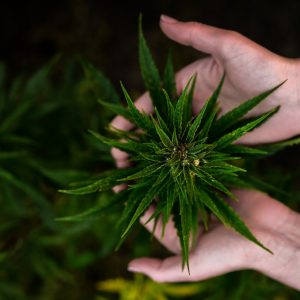What exactly is it?
Many different types of steroids can be found in various hormones and vitamins. Laboratory-made drugs known as “anabolic steroids” have the same chemical structure as the steroids present in the male sex hormone testosterone. These medications appeal to sportsmen and bodybuilders because of their muscle-building (anabolic) and masculinizing (androgenic) effects.
Anabolic steroids are mostly used to enhance growth in farm animals. They are sometimes used to treat delayed puberty, certain types of impotence, and body wasting caused by AIDS and other disorders in humans.
The body converts steroidal “supplements” such dehydroepiandrosterone (DHEA) into testosterone or a comparable substance. Although the little study has been done on steroidal supplements, they are expected to have the same effects and adverse testosterone cypionate for sale as anabolic steroids when used in significant doses.
What is the source of it?
Pharmaceutical businesses’ anabolic steroids are only available lawfully with a prescription. The majority of steroid drugs used by athletes are smuggled, stolen, or manufactured in clandestine laboratories. Veterinary medicines are frequently employed.
What does it resemble?
Tablets, pills, a solution for injection, and a cream or gel to rub into the skin are all examples of anabolic steroids. Steroids are commonly used by weightlifters and bodybuilders at doses up to 100 times higher than those used to treat medical disorders.
Steroids should be taken in a controlled manner to maximize their efficacy and minimize side effects. These statements, however, are not backed up by scientific research. The following are some examples of such methods:
• Cycling is defined as a period of drug use followed by a period of no drug use, with the notion that the drug-free cycle will allow the body to return to normal hormone levels.
• Pyramiding is the practice of taking doses in six- to 12-week cycles, starting with a low dose, gradually increasing it, and then lowering it to zero, with the belief that this gives the body time to acclimate to the high levels.
• Stacking refers to the use of two or more types of steroids, mixing oral and injectable forms in the belief that the medications will combine to produce a stronger effect.
Who makes use of it?
The majority of anabolic steroid use is not for medical reasons. Athletes who want to increase their performance, as well as bodybuilders and young men who want to acquire a more muscular appearance, are the main users. People who have been abused or assaulted have been discovered to utilize steroids in order to increase strength and better protect themselves.
The International Olympic Committee, as well as many other amateur and professional sports organizations, prohibit the use of steroids. However, because drug testing is expensive, professional athletes’ tests are often “random,” and they are frequently accompanied by a warning. Only at the world level of competition is regular mandatory testing required.
According to a 2011 poll of Ontario students in grades 7 to 12, 1.2 percent have used anabolic steroids at some point. According to a 2004 poll of Canadians aged 15 and up, 0.6% had used anabolic steroids at least once.
What effect does it have on you?
Steroids can cause a wide range of psychological effects, including euphoria and aggression. Steroid users claim that the medications make them feel powerful and energized. However, when taken in large dosages, steroids are known to cause irritation, anxiety, and aggression, as well as mood swings, manic symptoms, and paranoia.
Nausea, vomiting, and stomach discomfort are common side effects of high doses, especially when taken orally. Fluid retention and trembling are two further side effects.
 Is it habit-forming?
Is it habit-forming?
They certainly can be. In contrast to many other medications, steroid addiction does not develop tolerance to the effects. Some people who abuse steroids, on the other hand, fit the criteria for drug addiction because they:
• even if they have negative physical or emotional side effects, they continue to take steroids;
• spend a lot of effort and money trying to get the medications;
• mood fluctuations, exhaustion, restlessness, sadness, loss of appetite, sleeplessness, diminished sex drive, and the desire to take more steroids are all withdrawal symptoms.
Is it hazardous?
Yes. High-dose steroid use raises the risk of:
• Heart enlargement and irregularities, blood clots, high blood pressure, heart attack, and stroke are all things to be aware of. Athletes under the age of 30 have experienced steroid-related cardiac failure;
• “Rod wrath” is a term for hostility and violence;
• Negative personality changes, mania, and depression can all occur; depression can last for up to a year after drug usage is ceased;
• Hepatitis, liver enlargement, and liver cancer are all conditions that affect the liver;
• both women and men have lower fertility;
• Tendon ruptures and teenage growth arrest;
• If steroids are injected with sharing needles, hepatitis or HIV might develop, as well as infections if the needles are unclean.
What are the long-term consequences of its use?
When you stop using steroids, some of the side effects go away, but others stay with you for the rest of your life. Long-term use has the following effects:
• Both sexes suffer from acne, cysts, oily hair and skin, and thinning scalp hair;
• Men’s feminization, including the formation of permanent breasts;
• In men, testicular shrinkage, difficulty or discomfort urinating, and an increased risk of prostate cancer are all factors to consider;
• Breast reduction and body fat reduction in women, as well as coarsening of the skin, enlargement of the clitoris, deepening of the voice, excessive growth of body hair, loss of scalp hair, and alterations or cessation of the menstrual cycle; some of these effects may be permanent with long-term use;
• High amounts of testosterone inhibit bone growth in children and teenagers, preventing them from ever reaching full height;
• When drug usage is discontinued, hostility and violence are reduced, and personality changes are reversed.





